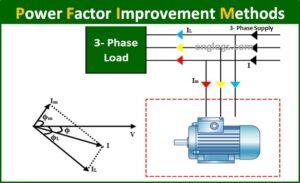What is a Relay and How it Works?
Relays are the primary protection as well as switching devices in most of the control processes or equipment regardless of whether they are electronic or electromechanical. All the relays respond to one or more electrical quantities like voltage or current such that they open or close the contacts or circuits. A relay is a switching device as it works to isolate or change the state of an electric circuit from one state to another. These are found in all sorts of devices. Relays allow one circuit to switch over to a second circuit that can be completely separated from the first. There is no electrical connection inside the relay between the two circuits – the link is magnetic and mechanical only.
Basically a relay consists of an electromagnet coil, an armature, a spring and a series of electrical contacts. The electromagnet coil gets power through a switch or a relay driver and causes the armature to get connected such that the load gets the power supply. The armature movement is caused using a spring. Thus, the relay consists of two separate electrical circuits that are connected to each other only through a magnetic connection, and the relay is controlled by controlling the switching of the electromagnet.

The contacts are usually common (COM) – normally open (NO) and normally closed (NC). The normally closed contact is connected to the common contact if power is not applied to the coil. The normally open contact is opened if power is not applied to the coil. When the coil is energized, the common contact is connected to the normally open contact, and the normally closed contact is left floating. The double-pole versions are same as the single-pole version except when the two switches open and close together.
Applications of Relays:
- Control a high-voltage circuit with a low-voltage signal, as in some types of modems or audio amplifiers.
- Control a high-current circuit with a low-current signal, as in the starter solenoid of an automobile.
- Detect and isolate faults on transmission and distribution lines by opening and closing the circuit breakers.
- Time delay functions. Relays can be modified to delay opening or delay closing set of contacts. A very-short delay uses a copper disk between the armature and moving blade assembly.
- Typical applications of relays include computer interfaces, telecommunication systems, traffic control, automotive electrical systems, home appliances, lighting control systems, electric motor controllers, tools and machines, air-conditioning and heating systems, and so on.




Pingback: Electromagnetic Relay Working & Types of Electromagnetic Relays